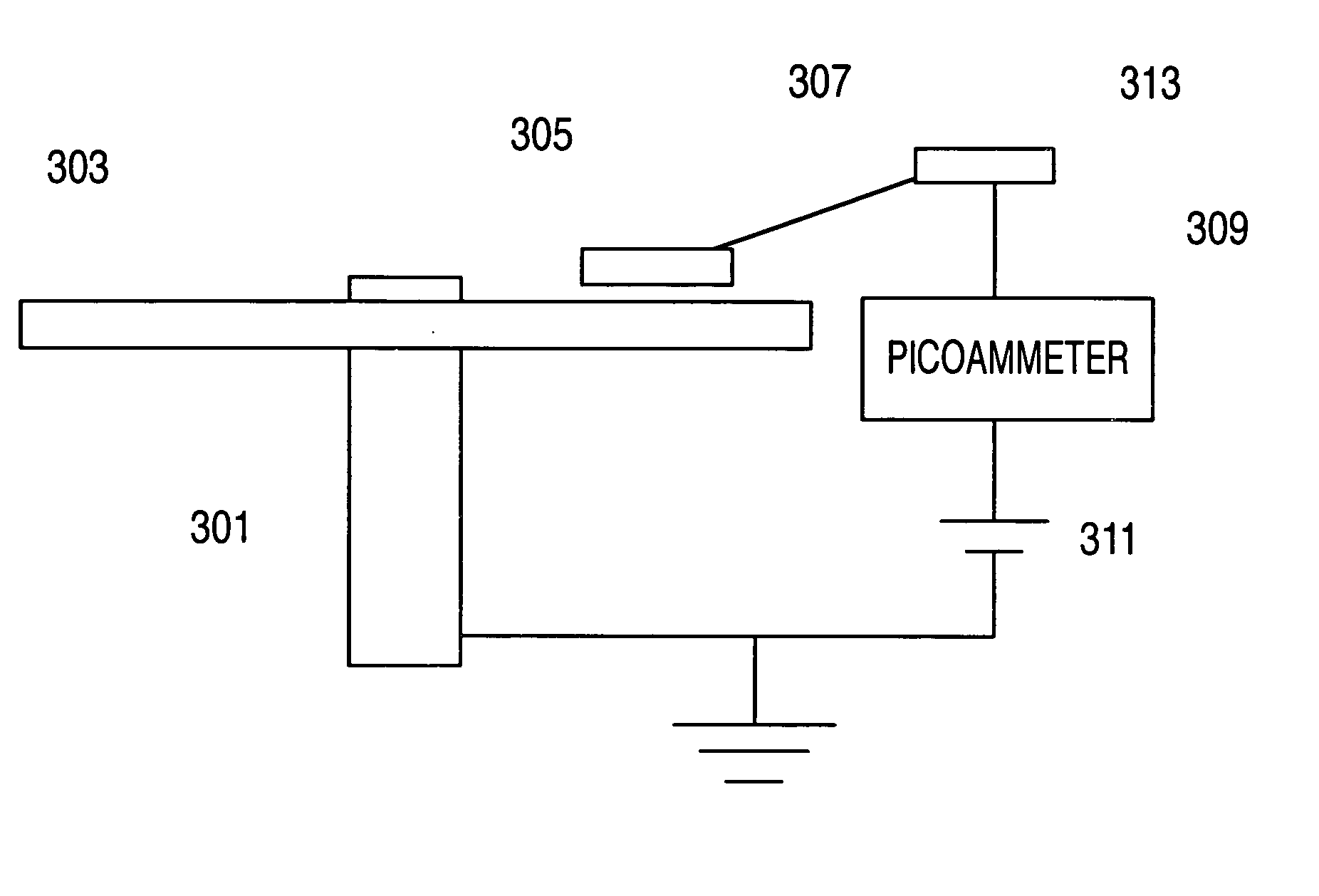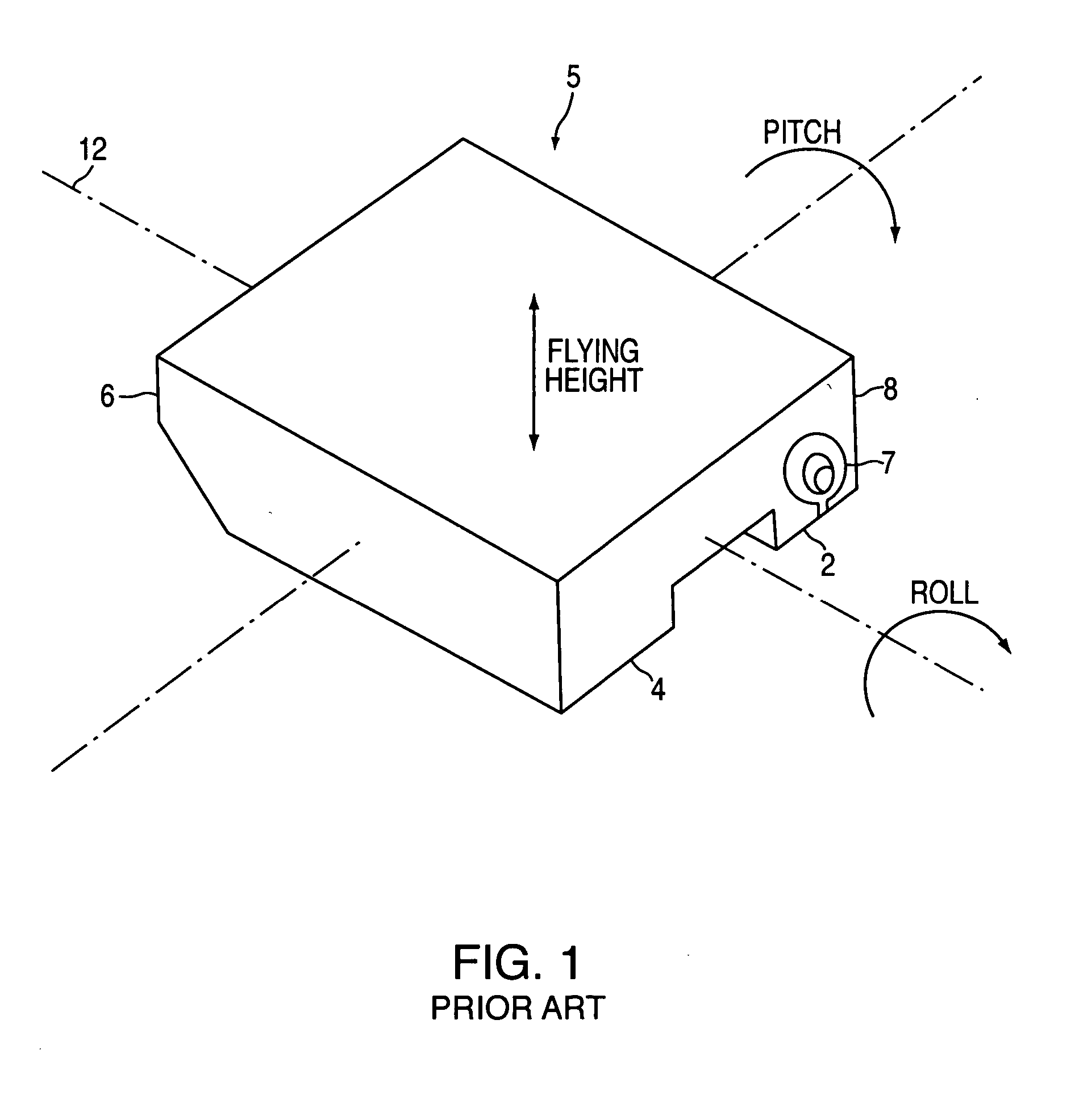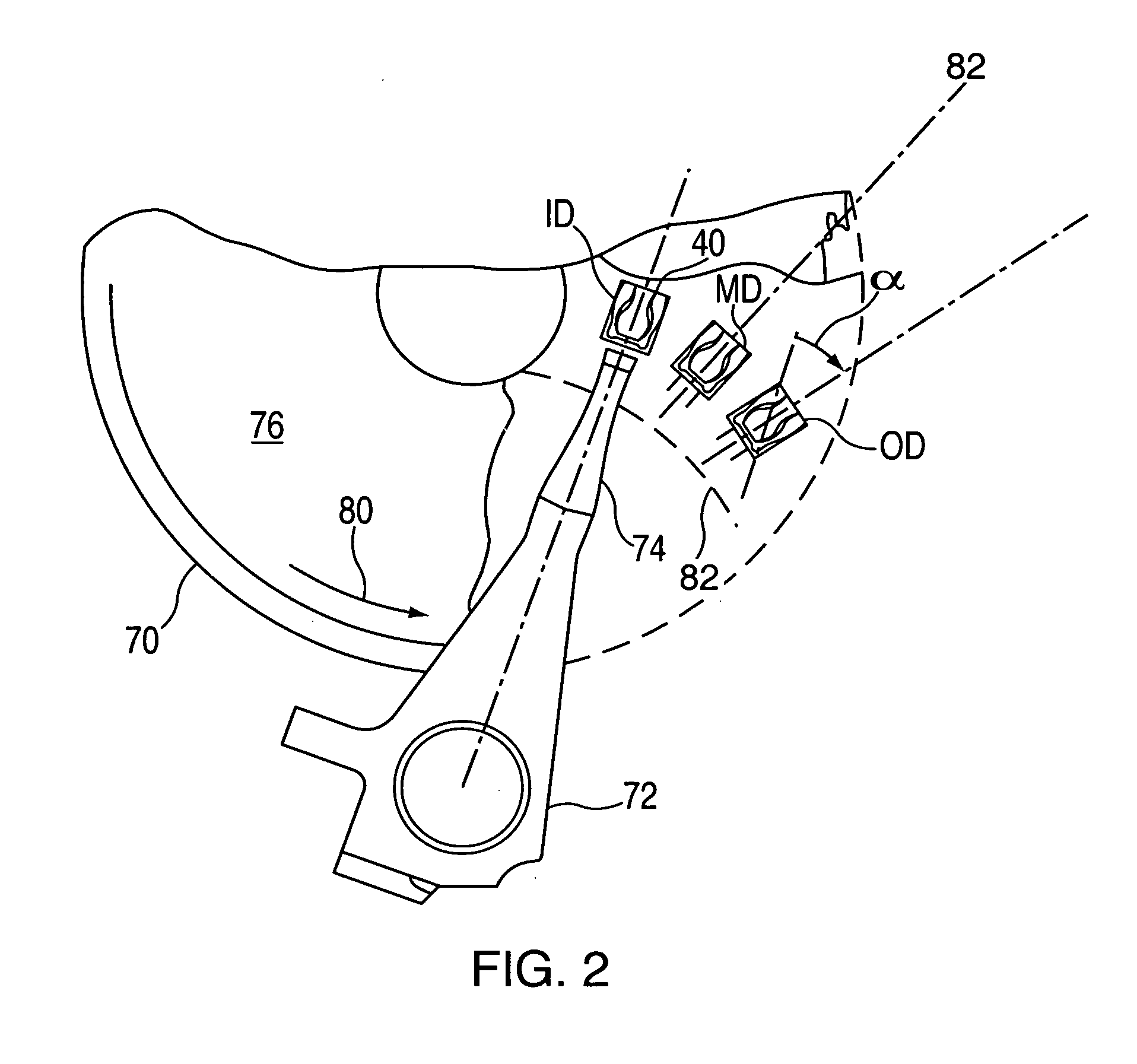Electrical current measurements at head-disk interface
a head-disk interface and electric current technology, applied in the direction of magnetic recording, data recording, instruments, etc., can solve the problems of adversely affecting the operation of the hard-disk drive, increasing frequency of interference between the slider abs and the disk surface, and damage to the read-write head directly
- Summary
- Abstract
- Description
- Claims
- Application Information
AI Technical Summary
Benefits of technology
Problems solved by technology
Method used
Image
Examples
first embodiment
[0026] In the present invention, the head gimbal assembly (HGA, including the head 305 and its supporting flexure) is electrically isolated from ground. The ammeter 309 would be connected to contact 313 which is electrically connected over suspension 307 to the magnetic recording head. As seen in FIG. 3, if the HGA is electrically isolated from ground, then the ammeter 309 would detect electric current flowing between the disk and the head, such as would occur during contact events.
second embodiment
[0027] In a second embodiment, the ammeter 309 is coupled to the slider 305 through a wire separate from the suspension 307 (not shown specifically in FIG. 3). Again, the recording head / slider is electrically isolated from ground, and the ammeter 309 would measure current between the head 305 and the recording medium 303. This embodiment may provide a lower capacitance and, thus, more sensitivity to the current measurement.
[0028] In the embodiments above, the model 6487 picoammeter / voltage source is amenable to measure a somewhat constant low-level current, such as one that may be seen for multiple head-disk contact events each revolution. The model 428 current amplifier by the same manufacturer may be better for situations where the current is more transient (e.g., due to contact between the head and a particle on the disk).
[0029] Whether to use a bias voltage in the measurement of current between the head / slider and the disk depends on the flying height and the nature of the head...
PUM
| Property | Measurement | Unit |
|---|---|---|
| flying height | aaaaa | aaaaa |
| external voltage | aaaaa | aaaaa |
| current amplitude | aaaaa | aaaaa |
Abstract
Description
Claims
Application Information
 Login to View More
Login to View More - R&D
- Intellectual Property
- Life Sciences
- Materials
- Tech Scout
- Unparalleled Data Quality
- Higher Quality Content
- 60% Fewer Hallucinations
Browse by: Latest US Patents, China's latest patents, Technical Efficacy Thesaurus, Application Domain, Technology Topic, Popular Technical Reports.
© 2025 PatSnap. All rights reserved.Legal|Privacy policy|Modern Slavery Act Transparency Statement|Sitemap|About US| Contact US: help@patsnap.com



